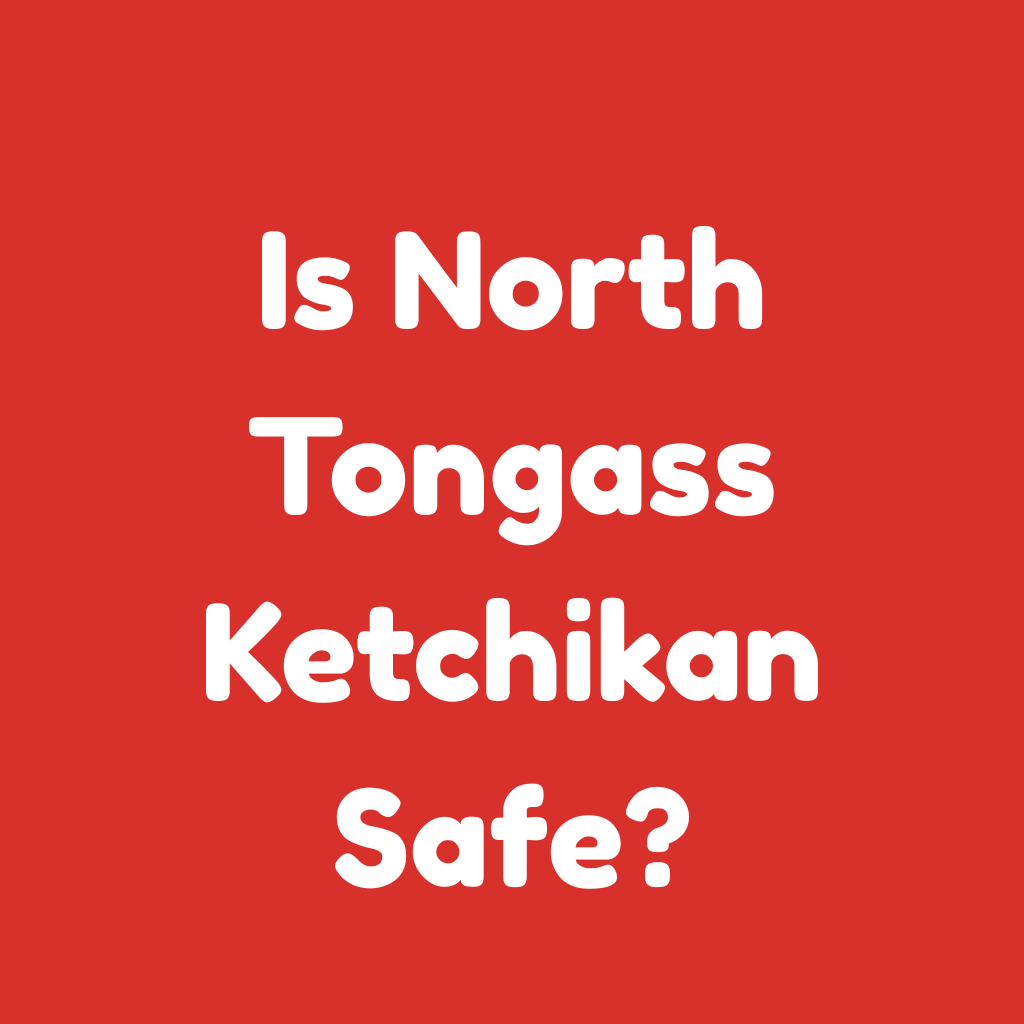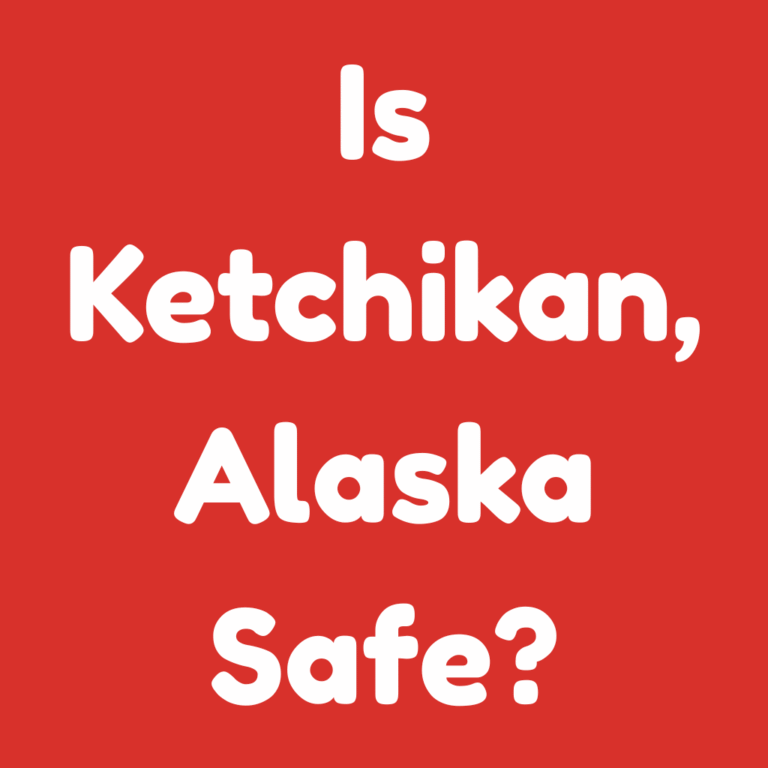Is North Tongass Ketchikan Safe?
Ketchikan, nestled in the southeastern part of Alaska, is renowned for its stunning landscapes, rich history, and vibrant culture.
The community of North Tongass, a scenic area just outside Ketchikan, often draws curious travelers with its natural beauty and proximity to adventure. However, as with any destination, safety is a key concern for many potential visitors.
If you’ve ever wondered, “Is North Tongass Ketchikan safe?” you’re not alone. Many travelers seek answers about the safety of this region before they embark on a journey into the Alaskan wilderness.
In this post, I’ll share my personal insights and offer a detailed look into what makes North Tongass Ketchikan a relatively safe area for visitors, and what precautions you should take.
North Tongass and Ketchikan
Before diving into safety, let’s take a closer look at the geography of Ketchikan and its North Tongass area.
Ketchikan is located in the Alexander Archipelago, which consists of more than 300 islands, and it’s often referred to as the “Salmon Capital of the World.”
North Tongass is situated along the northernmost part of the Tongass National Forest, just outside Ketchikan. This region is famous for its rugged beauty, dense forests, and abundant wildlife.
Most of the area is untouched by urban development, making it a popular destination for nature lovers, hikers, and those seeking solitude.
The roads in this area are often winding and narrow, and the terrain is uneven, so caution is needed if you plan on exploring remote areas.
However, it’s important to note that the safety of the area depends on a few key factors, including weather conditions, wildlife interactions, and general preparedness.
Is North Tongass Ketchikan Safe for Visitors?
When it comes to safety in North Tongass, it’s generally considered a safe area for tourists, but there are a few considerations to keep in mind.
- Wildlife Encounters: North Tongass is part of the vast Tongass National Forest, which is home to a variety of wildlife, including bears, moose, and eagles. While it’s unlikely that you’ll encounter a bear during your visit, it’s crucial to be bear-aware, especially if you’re hiking in remote areas. I’ve spent a fair amount of time in the Alaskan wilderness, and my best advice is to always carry bear spray and make noise while walking in the forest to avoid startling wildlife.
- Weather and Terrain: Alaska’s weather can be unpredictable, especially in the coastal areas like Ketchikan. Be prepared for rain, fog, and even snow in certain months. The terrain can also be tricky—muddy trails, slippery rocks, and steep inclines are common, so it’s essential to wear sturdy footwear and carry the right gear, especially if you plan on hiking or exploring off the beaten path.
- Crime and Local Safety: Ketchikan, and by extension, North Tongass, is a relatively peaceful place with a low crime rate. However, as with any travel destination, it’s always wise to remain vigilant. Petty crimes like theft can occasionally happen, especially in more populated areas, so be sure to secure your belongings and avoid leaving valuables in plain sight.
How to Stay Safe in North Tongass Ketchikan
Now that we have a general idea of the region’s safety, let’s go over some practical tips on how to stay safe during your trip.
Step 1: Prepare for the Weather
The weather in Ketchikan and North Tongass can change rapidly, so it’s important to check the forecast before heading out.
I’ve learned the hard way to always carry a waterproof jacket and extra layers when exploring the Alaskan outdoors, even in the summer months.
- Tip: Always pack a raincoat, waterproof boots, and a good set of layered clothing. The key is to stay dry and warm, as hypothermia can be a real risk in wet conditions.
Step 2: Carry Proper Gear
If you plan to hike or explore the forests, the terrain can be challenging. To stay safe, invest in quality gear that suits the environment:
- Footwear: Good hiking boots with waterproofing and traction are essential. I recommend boots with high ankle support to prevent injuries on rocky or uneven terrain.
- Bear Spray: Always have bear spray on hand, especially if you’re venturing into more remote areas. While bear encounters are rare, being prepared can make a huge difference.
Step 3: Be Aware of Your Surroundings
As mentioned earlier, wildlife is abundant in the region. While wildlife encounters are uncommon, being aware of your surroundings can help reduce risks.
If you see signs of recent bear activity (like fresh tracks or droppings), turn back and take a different path.
- Tip: Travel in groups if possible. Bears tend to avoid groups, and making noise as you walk can alert animals to your presence, giving them a chance to retreat.
Step 4: Stay Connected
North Tongass is remote, and phone service can be spotty in some areas. It’s always a good idea to have a GPS device or a satellite phone with you in case of emergencies.
I always tell travelers to let someone know their itinerary before heading into the wilds of Alaska.
Common Mistakes to Avoid in North Tongass Ketchikan
While it’s a safe area overall, many travelers make some common mistakes when visiting Ketchikan and North Tongass. Here are some key things to avoid:
Mistake 1: Underestimating the Weather
It’s easy to assume that Alaska’s weather will be mild, especially during summer, but it can be deceptively cold and wet. Over the years, I’ve learned to never underestimate the weather. One minute, the sky might be clear, and the next, you’re caught in a torrential downpour.
Mistake 2: Not Being Bear-Aware
A lot of people underestimate the importance of bear safety, and that’s a huge mistake. While attacks are rare, a bear encounter can be dangerous if you’re unprepared. Carrying bear spray and learning how to use it is vital.
Mistake 3: Ignoring the Terrain
The terrain can be treacherous, especially in wet conditions. Many hikers have fallen on slick rocks or slipped on muddy trails. If you’re not careful, it’s easy to get injured.
Table: Essential Safety Tips for North Tongass Ketchikan
| Safety Tip | Why It’s Important | Best Practice |
| Weather Awareness | Weather can change rapidly in Alaska | Always check the forecast and pack for rain |
| Proper Gear | The terrain can be difficult to navigate | Wear waterproof boots, bring bear spray |
| Wildlife Caution | Bears and other wildlife are common in the area | Make noise, travel in groups, carry bear spray |
| Communication | Cell service can be unreliable in remote areas | Carry a GPS device or satellite phone |
| Local Crime Awareness | Petty theft can happen in more populated areas | Keep valuables secure and avoid leaving them in the open |
Conclusion: Your Safe Adventure Awaits
Ketchikan and North Tongass are incredibly beautiful places to visit, but like any travel destination, they come with their own set of safety considerations.
By preparing properly, being aware of your surroundings, and following safety tips, you can enjoy a safe and unforgettable experience in Alaska.
- North Tongass is a generally safe area with a low crime rate, but wildlife and weather pose some risks.
- Prepare for unpredictable weather, carry the right gear, and always stay aware of your surroundings.
- Avoid common mistakes like underestimating the weather or neglecting bear safety.
Have you been to Ketchikan or North Tongass? I’d love to hear about your experiences or any safety tips you’ve learned from your travels!
Drop a comment below or share this article with fellow adventurers who are planning their trip to Alaska. Safe travels!
Frequently Asked Questions
1. What are the main risks in North Tongass Ketchikan?
The main risks involve wildlife encounters (particularly bears) and unpredictable weather conditions. It’s essential to be prepared for both.
2. Is Ketchikan safe for solo travelers?
Yes, Ketchikan is generally safe for solo travelers, especially if you take basic precautions like securing valuables and being aware of your surroundings.
3. What should I pack for a trip to North Tongass?
Pack waterproof clothing, sturdy hiking boots, bear spray, a GPS or satellite phone, and layered clothing to handle varying weather conditions.







